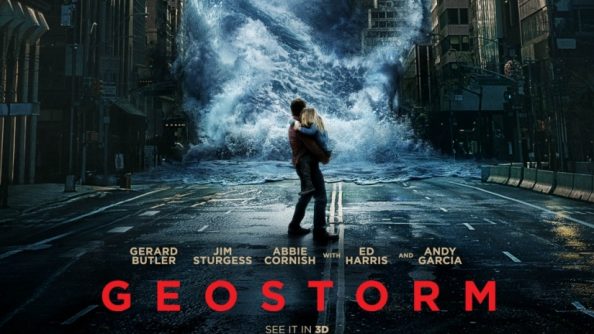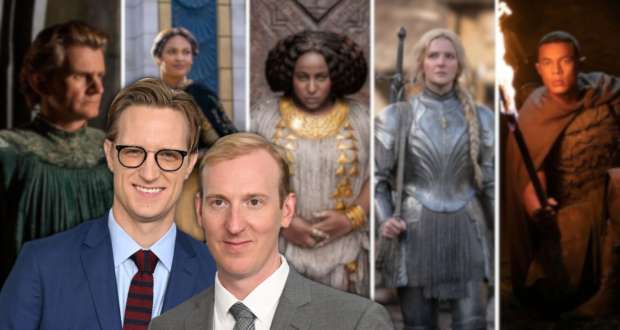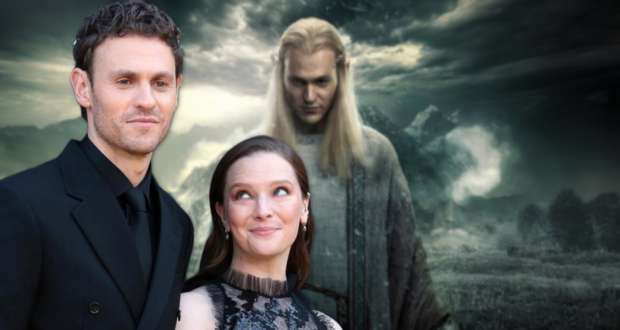The disaster movie GeoStorm is more than unrealistic, as the genre ‘disaster movie’ already suggests. The movie contributes to a gendered, specifically “male” narrative of controlling the weather and the climate. While taming hurricanes, destroying thunderclouds, and adjusting global and regional temperatures cannot be said to represent a male fantasy of eco-political agency per se, the cinematic fabrication GeoStorm – with thunderous special effects and a highly generic storyline – constructs weather control as a male project. It can therefore be relabeled as a “GenderStorm”.
GeoStorm’s story is simplistic: In response to a series of extreme weather events, an international coalition established a network of satellites, called “Dutch Boy”, to control weather and climate on global scale. Its leading scientist Jake Lawson (Gerard Butler) was replaced by his brother Max (Jim Sturgess) for Jake ignoring the bureaucratic chain of command. (This masculinity narrative of the male rebel is typical for movies like Armageddon, 13 Hours, The Rock, Independence Day, The Patriot, etc.) With the conflict between the two brothers as an uninspiring side plot, the main narrative presents a wave of incidents on the space station and weather catastrophes on Earth that have to be investigated. Max Lawson rehires his brother Jake and sends him to the space station to save Earth from an imminent “GeoStorm” – a chain reaction of hailstorms, floods, extreme heat waves and other disasters.
The movie Geostorm has been called “apocalypse porn”, “exceptionally bogus”, “a disaster (movie)”, a “plot-poor, special effects-heavy, scientifically-negligent romp around the globe”, “disastrously boring”, and a film “mostly about people staring at computer monitors”. It triggered furious reactions like the one by film critic Mark Kermode: “my brain stopped speaking to me and as I felt myself getting dumber and the dumber I enjoyed the film more and more”. One does not have to look far to find the various problematic elements of the movie worth criticizing, such as: it violates laws of physics (gravity on a space station, temperatures so hot that steel and concrete melt but car tires do not, etc.); it is unrealistic (why not control satellites from earth instead of a space station?); the action sequences are over the top (driving backwards in an electric taxi while shooting); and the acting and story are poor (there is not a single element of surprise). Further, the movie flopped at box office because of its consistent postponed release, its lousy critique of 13 % at Rotten Tomatoes, and because disaster movies are hardly new.
Still, there is more to the movie than unrealism and dullness covered up by mindless action. The movie GeoStorm – even as a bad example – could stimulate the necessary debate about ongoing research about climate engineering. While addressing an important topic, the film bristles with male actors and male fantasies. However, not only the mere dominance of male characters is problematic. The director Dean Devlin constructs gender roles, ideas of weather manipulation and politics in a (decidedly) male-dominated way.
Men manipulate – women assist
At first glance, women in GeoStorm are smart, have IT hacking or engineering skills, and sometimes even qualify as “badass”. Their appearances are deceitful, however, as all main female characters only fill assisting roles:
- Ute Fassbinder (Alexandra Maria Lara) is German and head of the international space station. The movie pretends to be progressive in revealing the main characters’ ignorance towards the possibility that a woman could be the boss of the station. After clarifying their positions –Jake Lawson should manage the crisis on Dutch Boy and Fassbinder is formal chief – Lawson effectively calls the shots while being assisted by Fassbinder throughout. Every command comes from Lawson, there is no initiative from Fassbinder.
- Jake Lawson’s daughter (Talitha Bateman) is introduced to the audience while fixing solar panels using mechanical tools. The teenage Hannah Lawson is skilled and self-confident when talking to grown-ups. Her uncle notes insightfully: “You are becoming more and more like your father”. With that comment, all of Hannah’s talents reflect back on her father, not herself.
- The U.S. Secret Service Agent Sarah Wilson (Abbie Cornish) is portrayed as attractive, sexually active, and showing combat abilities. However, Sarah helps to get secret information and assists in a rescue mission. Only in fighting the corrupt Secret Service agents Sarah shows some overly dramatic girl power. Apart from that, she is Max Lawson’s fiancée and helper, and she only shows agency insofar as it is derived from his mission.
- With Dana (Zazie Beetz), the story is the same. The cybersecurity expert and good friend of Max helps because she thinks the case is interesting. In doing that, the character fails to influence the storyline because she only carries out the plans of the Lawson brothers.
In GeoStorm, men have agency and women are the handmaids. The movie is far from qualifying as feminist only by putting women in the position of the hero’s sidekick not the weaker man (as in a classical example, the nerd assisting the hero). Here, women are generic “supporting characters” fulfilling dramaturgical functions without having a character development themselves.
A dominance of male roles is typical for Hollywood and most of popular culture in general. Whereas Gene Roddenberry was criticized for his then radically progressive cast including a black woman on the bridge of Starship Enterprise in Star Trek: The Original Series (1966-1967), standards have changed. The conservative TV audience of the Sixties found Lieutenant Uhura scandalous although she was “only” a communications officer. Present-day entertainment formats are expected to do even better in giving women, people of color and other underrepresented or unflatteringly represented groups more visibility and proper leading roles. A method to illustrate gender disparity in film is the so-called “Bechdel Test”. It stems from a comic strip in 1985 and combines three simple rules that disqualify most popular films for their gender imbalance:
- The movie has to have at least two female characters in it,
- who talk to each other,
- about something besides a man.
Half of the top earning movies in 2016 pass the Bechdel Test. For example, Suicide Squad passes, while Batman v. Superman does not. GeoStorm clearly fails. It passes rule 1 but fails both 2 and 3. The simple reason is that GeoStorm has too few important female roles, which are only busy with laying the groundwork for the Lawson brothers’ plan to save the world. Today, this test is often considered unsuitable for detecting feminist movies. It illustrates gender imbalance with a simple metric with a very low threshold, not taking into account that female characters often lack the depth of characterization their male counterparts are privy to, and not addressing the lack of racial diversity in film. Nevertheless, even applying this simple metric, GeoStorm performs poorly.
Constructing weather – constructing gender
A quick Google image search of “geoengineering OR climate engineering” delivers – aside from technical graphics and some conspiracy theory – a plethora of visuals of white male engineers fixing the clockwork of the world or white male doctors healing climate-sick Earth. The image of weather and climate fixers is white and male. Almost all figures being politically in charge of the weather control project in GeoStorm are white males. In contrast, the scientists and engineers on the space station as seen in the movie are diverse in race and gender. This discrepancy reflects on the clash between the “political elite” that tends to be corrupt and power-obsessed, and the “real scientists and engineers” – how Jake Lawson called his peers – that are fit for problem solving. The “Dr. Strangelove” figures of science fiction often combine ideas of political and technological control.
Those characters can be found in the long history of interest in weather and climate modification, which are well documented by historian Jim Fleming. For example, in the 1840s, rainmaking via lighting huge fires was proposed by the first US meteorologist James Espy. This and more proposals brought Espy the nickname “Storm King”. Fleming described the early history of weather and climate modification as dominated by “scientists, soldiers, and charlatans”. This has changed into more differentiated and pragmatic approaches.
Is engineering the local weather and the global climate only interesting to men? Early studies of public perception of climate engineering are not conclusive about gender differences. For some methods researchers found that, women have a slightly higher technology acceptance. Other studies claim the opposite but also note that the differences between participants based on their gender are dismissible. If outcome of studies of other technologies also apply to CE, then a lower technology acceptance of women likely. However, here is a large research gap.
As a philosophical inquiry pointed out, CE is aligned with “(culturally constructed) masculine temperament, highlighting activity/dominance, objectivity, and technicality (versus passivity/submission, subjectivity, and sociality characteristic of the feminine temperament)”. The point is that we connote CE with dominance and technicality, just as we connote masculinity with these traits. Ergo, CE appears as a masculine technology. GeoStorm did a good job in connecting these two connotations. It even emphasizes them with strong masculine roles solving the global crisis and with large-scale technological applications that are displayed as objectively working and only distorted by human error or corruption. However, neither CE nor gender has to be that way.
The view of environmental modifications as male technologies is not cast in stone. Gendered views and constructions can change. In politics, the male dominance crumbles – very slowly. With 16 years in office (1980-1996), Vigdís Finnbogadóttir was one of the longest sitting female presidents. Many young Icelanders then could not imagine a male president. However, women in office are not “female” in the sense of being peaceful and caring, but also strong-willed and rigid as female heads of state Golda Meir and Margaret Thatcher, who carried the moniker “The Iron Lady”, have proven. Therefore, they and others change how gender in politics is seen. – Gender and the gendered field alike are constructions. It is the same with environmental modifications. Gendering them is a product of history and society, not a solid fact. Our views change with women as soldiers and firefighters and men as kindergarten teachers and nurses – and they could change for environmental alteration when they are constructed less GeoStorm-like.
GeoStorm fiction – geoengineering research
 Climate engineering (CE) or geoengineering is understood as the intentional manipulation of the planetary environment in order to slow down global warming. The GeoStorm movie stresses weather control by all means but makes little explicit reference to climate control. Since today’s serious debates about dimming the sun or sucking CO2 from the atmosphere are separated from weather control, GeoStorm cannot be seen as a pure ‘climate engineering movie’. However, many reviewers of the movie (e.g. described as “the latest climate action blockbuster”) and maybe audiences (we do not know that) see GeoStorm in the context of deliberate climate and not foremost weather manipulation.
Climate engineering (CE) or geoengineering is understood as the intentional manipulation of the planetary environment in order to slow down global warming. The GeoStorm movie stresses weather control by all means but makes little explicit reference to climate control. Since today’s serious debates about dimming the sun or sucking CO2 from the atmosphere are separated from weather control, GeoStorm cannot be seen as a pure ‘climate engineering movie’. However, many reviewers of the movie (e.g. described as “the latest climate action blockbuster”) and maybe audiences (we do not know that) see GeoStorm in the context of deliberate climate and not foremost weather manipulation.
Various ideas are collected under the umbrella term climate engineering, such as aerosols in the stratosphere to reflect more sunlight, injection of sea salt into clouds to make them more reflective, fertilizing the ocean in order to bio-sequester more carbon, or CO2 air filters that store the carbon underground. Contemporary research shows: CE is a risky and uncertain, but possibly feasible method to keep the global temperature under 1.5 or 2 °C.
Diversity in the CE discourse is still low. Most researchers and other experts discussing CE are from the USA, the UK, or Germany. China started a large research program and the new DECIMAL Fund wants to include researchers from the Global South. Apart from that, CE is a topic mostly debated by white western men (including the very author of this text problematizing the issue). At a CE conference, some participants joked how the “queue at the men’s room” seems to be an indicator of the male overrepresentation in the field. Since most of the contributions to climate engineering research come from physical sciences and engineering, some see – this has not yet been studied – the gender imbalance in the CE field stemming from the imbalance in STEM subjects.
Clearly, it is often the white male scientists that the media presents in interviews and news features on CE, like David Keith, Ken Caldeira and Alan Robock. A media analysis (by Holly Buck) showed that women get only 3 % of the attention men get (15 out of 500 quoted in news media). However, none of these male scientists is a Dr. Strangelove, and none of them could instantly become a Jake Lawson with a global satellite system in 2019. In general, not many CE researchers talk about gender at all – with the mentioned philosophical inquiry as an exception.
For a better way of taking care about the planet and its inhabitants
Clearly, it is important to discuss climate politics and all social implications of climate engineering. Nevertheless, isn’t that enough to worry about? Why burden oneself with “minor” issues of gender balance and diversity or even feminism?
There are three main reasons for considering the gender perspective:
- Studies of environmental justice have shown that environmental impacts hit socially weak groups the hardest. In the context of climate change and CE, gender and diversity are one important aspect when thinking about impacts.
- Solving one problem should not create (or neglect) another. Thinking about alternative approaches against climate change should not fuel gender imbalances.
- Today’s research and discussion on CE is still male dominated. We should change that and bring in more ideas.
With these reasons – and many more – GeoStorm is a bad narrative of weather and climate interventions. We should make better narratives – not with a happy end, but with a good balance of perspectives.



















